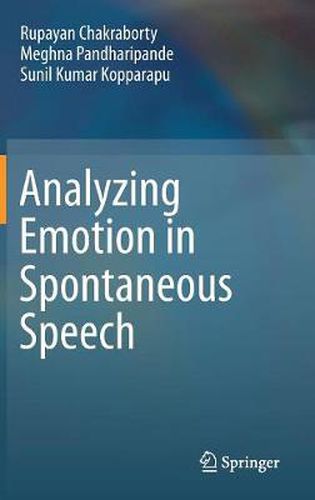Readings Newsletter
Become a Readings Member to make your shopping experience even easier.
Sign in or sign up for free!
You’re not far away from qualifying for FREE standard shipping within Australia
You’ve qualified for FREE standard shipping within Australia
The cart is loading…






This title is printed to order. This book may have been self-published. If so, we cannot guarantee the quality of the content. In the main most books will have gone through the editing process however some may not. We therefore suggest that you be aware of this before ordering this book. If in doubt check either the author or publisher’s details as we are unable to accept any returns unless they are faulty. Please contact us if you have any questions.
This book captures the current challenges in automatic recognition of emotion in spontaneous speech and makes an effort to explain, elaborate, and propose possible solutions. Intelligent human-computer interaction (iHCI) systems thrive on several technologies like automatic speech recognition (ASR); speaker identification; language identification; image and video recognition; affect/mood/emotion analysis; and recognition, to name a few. Given the importance of spontaneity in any human-machine conversational speech, reliable recognition of emotion from naturally spoken spontaneous speech is crucial. While emotions, when explicitly demonstrated by an actor, are easy for a machine to recognize, the same is not true in the case of day-to-day, naturally spoken spontaneous speech. The book explores several reasons behind this, but one of the main reasons for this is that people, especially non-actors, do not explicitly demonstrate their emotion when they speak, thus making it difficult for machines to distinguish one emotion from another that is embedded in their spoken speech. This short book, based on some of authors’ previously published books, in the area of audio emotion analysis, identifies the practical challenges in analysing emotions in spontaneous speech and puts forward several possible solutions that can assist in robustly determining the emotions expressed in spontaneous speech.
$9.00 standard shipping within Australia
FREE standard shipping within Australia for orders over $100.00
Express & International shipping calculated at checkout
This title is printed to order. This book may have been self-published. If so, we cannot guarantee the quality of the content. In the main most books will have gone through the editing process however some may not. We therefore suggest that you be aware of this before ordering this book. If in doubt check either the author or publisher’s details as we are unable to accept any returns unless they are faulty. Please contact us if you have any questions.
This book captures the current challenges in automatic recognition of emotion in spontaneous speech and makes an effort to explain, elaborate, and propose possible solutions. Intelligent human-computer interaction (iHCI) systems thrive on several technologies like automatic speech recognition (ASR); speaker identification; language identification; image and video recognition; affect/mood/emotion analysis; and recognition, to name a few. Given the importance of spontaneity in any human-machine conversational speech, reliable recognition of emotion from naturally spoken spontaneous speech is crucial. While emotions, when explicitly demonstrated by an actor, are easy for a machine to recognize, the same is not true in the case of day-to-day, naturally spoken spontaneous speech. The book explores several reasons behind this, but one of the main reasons for this is that people, especially non-actors, do not explicitly demonstrate their emotion when they speak, thus making it difficult for machines to distinguish one emotion from another that is embedded in their spoken speech. This short book, based on some of authors’ previously published books, in the area of audio emotion analysis, identifies the practical challenges in analysing emotions in spontaneous speech and puts forward several possible solutions that can assist in robustly determining the emotions expressed in spontaneous speech.